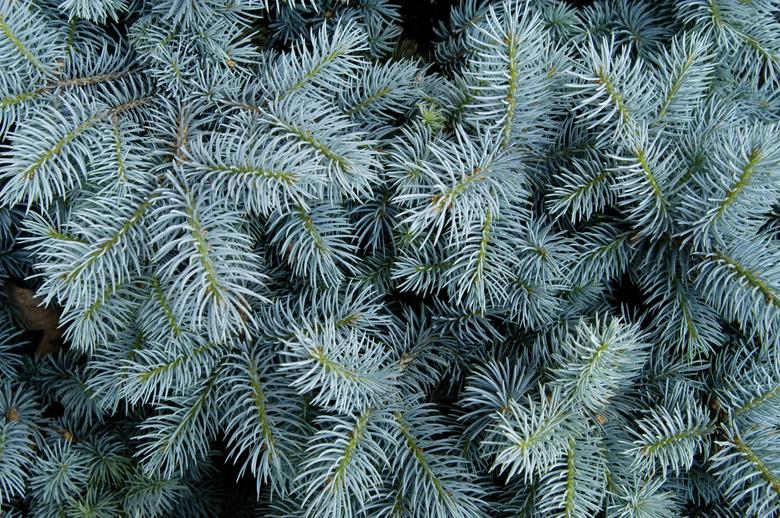How To Make Blue Spruce Trees More Blue
The Colorado blue spruce (Picea pungens, USDA hardiness zones 2-7), also known as the blue or silver spruce, adds a unique color to your evergreen landscaping elements. It's an upright pyramidal tree with bluish-green to silver-blue needles, and it's often used in the home landscape because of its unique blue coloration. If you choose this tree for its bluish color, you likely want to get as much of the blue color as possible. The cultivar you choose has a major impact on how blue your tree looks, as does the care you give it.
Types of Blue Spruce
Within the Colorado blue spruce species, you have many cultivar choices, some of which are known for their blue color. Sowing blue spruce seeds often results in an unreliable blue color. The best bet is to choose Colorado blue spruce trees that are propagated vegetatively and taken from the most blue specimens. This ensures that it was taken from parent stock with a distinct blue color. Cultivars known for the bluest coloration include Hoopsii (powdery-blue needles), Fat Albert (steel-blue needles), and Baker (deep-blue needles). If you prefer a silver-blue color, go for a Thomsenii blue spruce or Montgomery blue spruce. Compare the types of blue spruce available at the nursery to see which one displays the brightest blue color.
Choose an Ideal Location
Outside of choosing the bluest tree possible at the nursery, you can help your tree show off its blue color by providing the best care possible. Plant the tree in a location where it will receive at least six hours of sun per day, preferably in sandy, clay or loamy soil. These trees need soil that drains well to thrive. Providing these optimal growing conditions will increase the chances of having a healthy tree with healthy coloration. Though it is drought-tolerant after it is established, regularly watering the tree in its first season helps get the tree off to a good start.
Follow Fertilizer Recommendations
Fertilizer use is another consideration in the healthy growth and best coloration of your blue spruce. Don't fertilize the tree in its first year. Thereafter, apply an organic fertilizer before new growth starts, usually late in the winter or early in the spring, according to soil-test results. The best fertilizer for blue spruce trees is a slow-release formula designed for shrubs and trees. Dead wood also should be pruned from the tree in the spring to help the tree stay healthy.
If a blue spruce develops a yellow or yellow-green color, have the soil tested to determine if you need to apply a chelated iron-rich fertilizer. A shortage of iron will cause the needles of a blue spruce to lose their blue coloration. The fertilizer will replace the depleted iron and help the needles regain their blue color.
Choosing the right types of blue spruce and giving them proper care helps create the bluest needles possible. Giving the tree what it needs helps make it the envy of your neighborhood with a rich blue spruce color that stands out.
